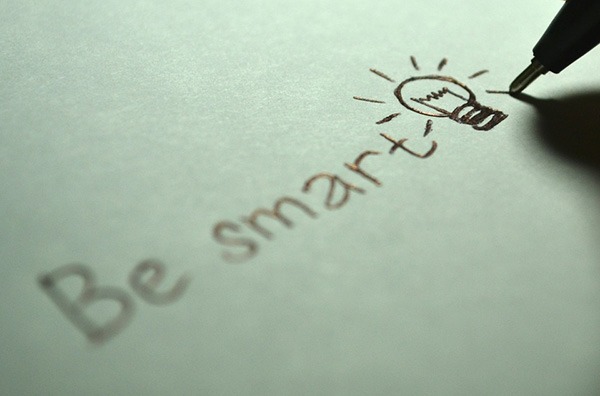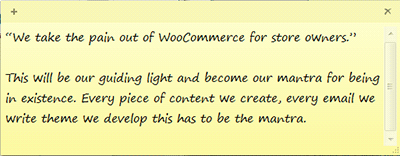
Is your workflow a mess? Mine used to be until I read that one book. Soon after, I was getting more accomplished with much less effort and stress. David Allen’s Getting Things Done: The Art of Stress Free Productivity was the secret.
For every hire thereafter, part of their on-boarding became reading this book and implementing it into their workflow. Here’s an insight on what some of the team members do to manage their workflow.
Nick J – Director
Getting Things Done has been a game changer for my life. I took the instructions literally and dedicated a weekend going through old files and boxes of “stuff” so I could start with a clean slate. I even bought a label machine as instructed (which I now rarely use).
 Once I had my filing and boxes of “someday maybe” sorted I chose Evernote as my “In” box and everything I need to remember gets added into a notebook called “inbox” as a reminder so it goes to the top. This is very easy to do from my phone or laptop. The following morning, I catalogue all the previous day’s reminders into where they need to go, usually other Evernote notebooks.
Once I had my filing and boxes of “someday maybe” sorted I chose Evernote as my “In” box and everything I need to remember gets added into a notebook called “inbox” as a reminder so it goes to the top. This is very easy to do from my phone or laptop. The following morning, I catalogue all the previous day’s reminders into where they need to go, usually other Evernote notebooks.
This gives me a good idea of what I need to do for my day and catalogues what needs to be done down the track in their respective “buckets”. My mind is a lot freer because I don’t have to worry about remembering 101 things as they are all written down and catalogued. The only downside is now I have become really dependent on this system I don’t remember anything unless it is recorded in my “In bucket”. Oh well, the price of a free mind.
Junix – Lead Developer
After reading “Getting Things Done” by David Allen, I have realized how unorganized I was in handling my tasks. I have learned the 5 stages of managing workflow, which enables me to not forget an important task, which I tend to do sometimes. In Wooassist, most of the tasks assigned to me have an email notification from the project management tool. This allows me to collect the inputs I need to do for a day and coming days. But even so with these emails, I’m still forgetting things as I’m not properly jotting them down to a different platform. I also tend to preview emails, so that I can know the gist of all the things I need to do in a day, but then forget that I had to do that task because it’s not bolded anymore in my inbox. I also find it tedious to “copy and paste” information that is already there in the email.
 I did my research and found a tool called Sortd which was still on a beta test and was invitation based only. Fortunately, I got an invitation link and was able to start using the tool. I love it as I am able to organize my tasks within my email. Even if I preview an email, it will still be bolded in my task list until I mark it completed. Within Gmail, I am now able to separate other emails from important tasks, and can also divide them into different categories easily.
I did my research and found a tool called Sortd which was still on a beta test and was invitation based only. Fortunately, I got an invitation link and was able to start using the tool. I love it as I am able to organize my tasks within my email. Even if I preview an email, it will still be bolded in my task list until I mark it completed. Within Gmail, I am now able to separate other emails from important tasks, and can also divide them into different categories easily.
Sortd allows me to create different columns, just like Kanbanflow and Trello. Currently, I have four columns in use: “Priority tasks”, “Today Tasks”, “Delegated Tasks”, and “Scheduled Tasks” respectively. With this four columns, processing tasks have been easier and I’m now doing most of the tasks assigned to me without forgetting anything.
For processing the tasks, I realized that the guide told by the book applies to me. It was stated there that if a task takes more than 2 minutes for me to complete it, I need to delegate it, but I believe for myself and kind of work I do, time is not a perfect barometer for it. Currently I check if the tasks can be delegated based on its difficulty. I like to do tasks that are difficult to do, so the tasks that are easy and moderate are the tasks that I delegate.
I am also making it a habit now to check the tasks that I have marked as complete and also my emails on a weekly basis, just to make sure that I have properly done them and that I haven’t missed a task that needs to be done.
John – Project Manager
How do I get things done? For myself, it stems from having low energy levels that I have designed the systems in my life to make them more efficient. I live and breathe efficiency. I hate books that bury their core actionable concepts in a layer of fluff. Whenever possible, I watch movies and TV shows on average at 1.5X playback speed. And I talk much, much less than normal people because I prefer to be short and concise with my words.
 Without context, that would mean I am very productive. But in actuality, it’s only to preserve my energy levels for the tasks that matter. In the past, I have done this subconsciously. But upon reading Getting Things Done by David Allen, I have started to take a conscious approach to productivity. I believe it all boils down to self-optimization.
Without context, that would mean I am very productive. But in actuality, it’s only to preserve my energy levels for the tasks that matter. In the past, I have done this subconsciously. But upon reading Getting Things Done by David Allen, I have started to take a conscious approach to productivity. I believe it all boils down to self-optimization.
As for myself, the concepts that I believe are most important to the way I get things done are:
- Creating or finding a task management system that fits my own needs and personality. The usual digital productivity apps are Asana, Evernote and other similar applications. We do make use of these as all-around solutions for Wooassist. But for the tasks specific to my own role, I am using a custom spreadsheet and Kanbanflow. I’ve tailor-made the spreadsheet to record everything I need to keep track of. And we chose Kanbanflow simply because we have found that it fits our needs best.
- Rid yourself of worry and think in terms of actionable steps (what’s the next step, what you can do about it, etc.
- The usual culprit of being underproductive and burning out is worry. It is a nagging feeling that keeps draining your mental capacity even when you’re not at work. For this, I put my trust on my task management system. And let it serve as my memory so that I don’t have to worry about an unfinished task when I’m not at work.
- And when mistakes happen, customer-facing roles usually have it bad. That is because clients lash out at the people on the frontlines. I can’t stop mistakes from happening but I do not worry about it too much. Instead, I think of the concrete steps that I can take to create a suitable solution or course of action.
- Once you are overcome with worry, you become unproductive and stressed out. If fear is the mind-killer, worry is the mind-stopper.
- Keep optimizing yourself. This for me is the most important thing that people fail to do. There are tons of productivity techniques out there. E.g. time-blocking, the Pomodoro technique or establishing a routine. For myself, I am constantly A/B testing myself to figure out what works and what doesn’t. There’s no catch-all method, everyone is different and we’ve got to figure out what works for us ourselves.
Rob – Project Manager
Three years ago, Nick recommended reading the book Getting Things Done: The Art of Stress Free Productivity by David Allen. I wasn’t a big book reader so instead I listened to the audiobook.
Over the past three years, I tried to follow the tips in the book. Some stuff didn’t stick but some things I keep doing up until now.

I start my work day checking emails. I have email alerts set up for Asana, Hipchat and Kanbanflow so everything goes to my email. For any task that can be done around 2 minutes I do it immediately. I also keep a log of all current tasks that I have. I use Sticky Notes for this.
I tried using Evernote before and I still use it from time to time for saving stuff that I might need access to when I’m not on PC. I’m rarely on another machine though so it doesn’t get much use. It has proven really useful the few times I had problems with my PC and had to log in at a net café. I’m not saying Evernote is bad. It’s actually really good but I just like Sticky Notes because it’s more lightweight and it just sits there on the background.
I keep a note of all my pending tasks called “Tasks” and this helps me get prepped for work. From this list, I pick out what I need to do for the day. Every task I complete I move to another note called “Completed Tasks”. This other note helps me prepare my report before I end of shift for the day.
While working, if I stumble upon any useful articles that I want to read later on either for leisure or for work, I put them on a note called “Readings for Later”. And if I come up with good ideas to suggest, I’ll note them down in another note called “Ideas/Suggestions”.
Oh and another thing. I have one note which just mentions the Wooassist mantra:
Joanne – Site Maintenance and Admin
Before reading “Getting Things Done” I found my work life in utter chaos, missed deadlines, increased stress levels, not being able to do the things that I want to do, and not having enough time for my family as much as I want to. Being a mom, a wife, a daughter and an employee is not that easy for me, especially because I work from home.

I’ve tried numerous methods of organizing my daily routines, some actually work for some time, but once my schedule is disrupted for some reason, I crumble. I rush through things eager to do as much as I can in my limited time, playing catch up and formulating new ways to spend half an hour on a task that requires a full hour. And the result, well let’s just say, is less than stellar.
After reading Getting Things Done, I realized that useless cramming makes you unproductive and inefficient. I also recognized that my subconscious effort to juggle all my responsibilities, like doing the laundry or planning a weekend getaway for the kids can affect my work. With this in mind, I came up with a system to make sure that I exert effort on things where I can make a difference and not worry about the things that I can do nothing about.
For work, I have synced my email with Kanbanflow and Asana Board so that all of tasks and reminders will directly go to my email. I also formulated a morning routine that basically consists of morning meditation and coffee. I usually wake up around 4 am just to feel the sense of calmness. I used to think that I’m more productive working late hours but after reading Getting Things Done and evaluating myself, I realized that waking up around 8 or 9, when everyone is busy, affects me and I sort of get frantic and flustered too.
To manage my personal life, finances, and other things, I use a notebook. There I list down my goals for every month, track down my finances, and basically list down other things like groceries, things my son needs for school and so much more. Most of the task I list down there gets delegated though but it’s easier to keep track of things.
Each and every one of us is different and there’s no step by step solution for getting things done. You need to know what works for you and evaluate your values and priorities. If you haven’t read the book yet, I strongly suggest that you do. It can make your life easier.
The Secret to Stress-Free Productivity
 There is no concrete formula that would work for everyone. It is up to you to discover what will work best for you. The book Getting Things Done: The Art of Stress Free Productivity by David Allen did wonders for the Wooassist team. Each team member adapted his/her own way of dealing with the workflow based on the book and it worked wonders. We hope this post inspires you to set up your own system and to start being efficient.
There is no concrete formula that would work for everyone. It is up to you to discover what will work best for you. The book Getting Things Done: The Art of Stress Free Productivity by David Allen did wonders for the Wooassist team. Each team member adapted his/her own way of dealing with the workflow based on the book and it worked wonders. We hope this post inspires you to set up your own system and to start being efficient.
If you can get the book, we highly recommend reading it. And when you’re done reading it and you’ve adapted your own stress-free workflow, we hope you can come back to this post, hit the comments and tell us something about it.










Leave a Reply